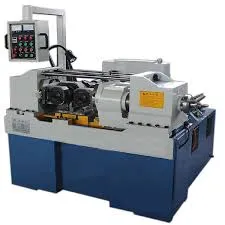
-
 Afrikaans
Afrikaans -
 Albanian
Albanian -
 Amharic
Amharic -
 Arabic
Arabic -
 Armenian
Armenian -
 Azerbaijani
Azerbaijani -
 Basque
Basque -
 Belarusian
Belarusian -
 Bengali
Bengali -
 Bosnian
Bosnian -
 Bulgarian
Bulgarian -
 Catalan
Catalan -
 Cebuano
Cebuano -
 Corsican
Corsican -
 Croatian
Croatian -
 Czech
Czech -
 Danish
Danish -
 Dutch
Dutch -
 English
English -
 Esperanto
Esperanto -
 Estonian
Estonian -
 Finnish
Finnish -
 French
French -
 Frisian
Frisian -
 Galician
Galician -
 Georgian
Georgian -
 German
German -
 Greek
Greek -
 Gujarati
Gujarati -
 Haitian Creole
Haitian Creole -
 hausa
hausa -
 hawaiian
hawaiian -
 Hebrew
Hebrew -
 Hindi
Hindi -
 Miao
Miao -
 Hungarian
Hungarian -
 Icelandic
Icelandic -
 igbo
igbo -
 Indonesian
Indonesian -
 irish
irish -
 Italian
Italian -
 Japanese
Japanese -
 Javanese
Javanese -
 Kannada
Kannada -
 kazakh
kazakh -
 Khmer
Khmer -
 Rwandese
Rwandese -
 Korean
Korean -
 Kurdish
Kurdish -
 Kyrgyz
Kyrgyz -
 Lao
Lao -
 Latin
Latin -
 Latvian
Latvian -
 Lithuanian
Lithuanian -
 Luxembourgish
Luxembourgish -
 Macedonian
Macedonian -
 Malgashi
Malgashi -
 Malay
Malay -
 Malayalam
Malayalam -
 Maltese
Maltese -
 Maori
Maori -
 Marathi
Marathi -
 Mongolian
Mongolian -
 Myanmar
Myanmar -
 Nepali
Nepali -
 Norwegian
Norwegian -
 Norwegian
Norwegian -
 Occitan
Occitan -
 Pashto
Pashto -
 Persian
Persian -
 Polish
Polish -
 Portuguese
Portuguese -
 Punjabi
Punjabi -
 Romanian
Romanian -
 Russian
Russian -
 Samoan
Samoan -
 Scottish Gaelic
Scottish Gaelic -
 Serbian
Serbian -
 Sesotho
Sesotho -
 Shona
Shona -
 Sindhi
Sindhi -
 Sinhala
Sinhala -
 Slovak
Slovak -
 Slovenian
Slovenian -
 Somali
Somali -
 Spanish
Spanish -
 Sundanese
Sundanese -
 Swahili
Swahili -
 Swedish
Swedish -
 Tagalog
Tagalog -
 Tajik
Tajik -
 Tamil
Tamil -
 Tatar
Tatar -
 Telugu
Telugu -
 Thai
Thai -
 Turkish
Turkish -
 Turkmen
Turkmen -
 Ukrainian
Ukrainian -
 Urdu
Urdu -
 Uighur
Uighur -
 Uzbek
Uzbek -
 Vietnamese
Vietnamese -
 Welsh
Welsh -
 Bantu
Bantu -
 Yiddish
Yiddish -
 Yoruba
Yoruba -
 Zulu
Zulu
Automatic Thread Rolling Machine Pricing Guide and Comparison
Understanding the Pricing Landscape of Automatic Thread Rolling Machines
In today’s manufacturing landscape, the demand for precision and efficiency has led to the widespread adoption of advanced machinery, particularly automatic thread rolling machines. These machines are integral to various industries, including automotive, aerospace, and electronics, where the need for high-quality threaded components is paramount. Understanding the pricing intricacies of these machines can help businesses make informed purchasing decisions.
What is an Automatic Thread Rolling Machine?
An automatic thread rolling machine is designed to create threads on metal rods or other substrates through a cold forming process. Unlike traditional cutting methods, thread rolling enhances the mechanical properties of the materials, resulting in stronger and more durable threads. This process not only saves material compared to cutting but also increases production efficiency significantly.
Factors Influencing Prices
The price of automatic thread rolling machines can vary widely based on several factors
1. Machine Type There are various types of thread rolling machines, including flat die, cylindrical, and planetary. Each type has unique capabilities and specifications, which can influence the price.
2. Size and Capacity The size of the machine and the maximum thread size it can produce are crucial determinants of price. Larger machines and those capable of producing high tensile strength threads typically command higher prices.
3. Brand and Quality Renowned manufacturers with a reputation for quality and reliability often charge a premium for their products. Investing in machines from established brands can yield long-term benefits, such as reliability and lower maintenance costs.
automatic thread rolling machine pricelist

5. Customization Customized machines tailored to specific production needs can be more expensive than standard models. However, customization can lead to substantial gains in productivity and efficiency.
6. Market Trends Changes in market demand, material costs, and technological advancements affect pricing. For instance, a surge in demand for automotive components may drive up the prices of thread rolling machines.
7. Location and Shipping The geographical location of both the manufacturer and the buyer can influence costs. Shipping fees, import duties, and taxes play a significant role in the final price of the machines.
Average Price Range
The price of automatic thread rolling machines typically falls within the range of $10,000 to $200,000. Lower-end models designed for smaller operations or specific applications can start around $10,000, while high-capacity machines with advanced features can reach upwards of $100,000 or more.
Cost of Ownership
While the initial investment in an automatic thread rolling machine can be significant, it’s crucial to consider the total cost of ownership. This includes maintenance, repair, energy consumption, and potential labor savings. A well-maintained machine can last for decades, offering a strong return on investment (ROI).
Conclusion
Investing in an automatic thread rolling machine is a strategic decision that can enhance productivity and efficiency in manufacturing processes. By understanding the various factors that influence pricing—from machine type to the market landscape—businesses can better navigate their purchasing decisions. As industries continue to evolve, the demand for quality and reliability will only grow, making these machines a vital component of modern manufacturing.
As with any significant investment, conducting thorough research and seeking advice from industry experts can help companies select the right machine that meets their needs while staying within budget. Investing wisely in thread rolling technology not only streamlines production but also contributes to the overall quality and durability of the final products, positioning businesses for long-term success in competitive markets.
